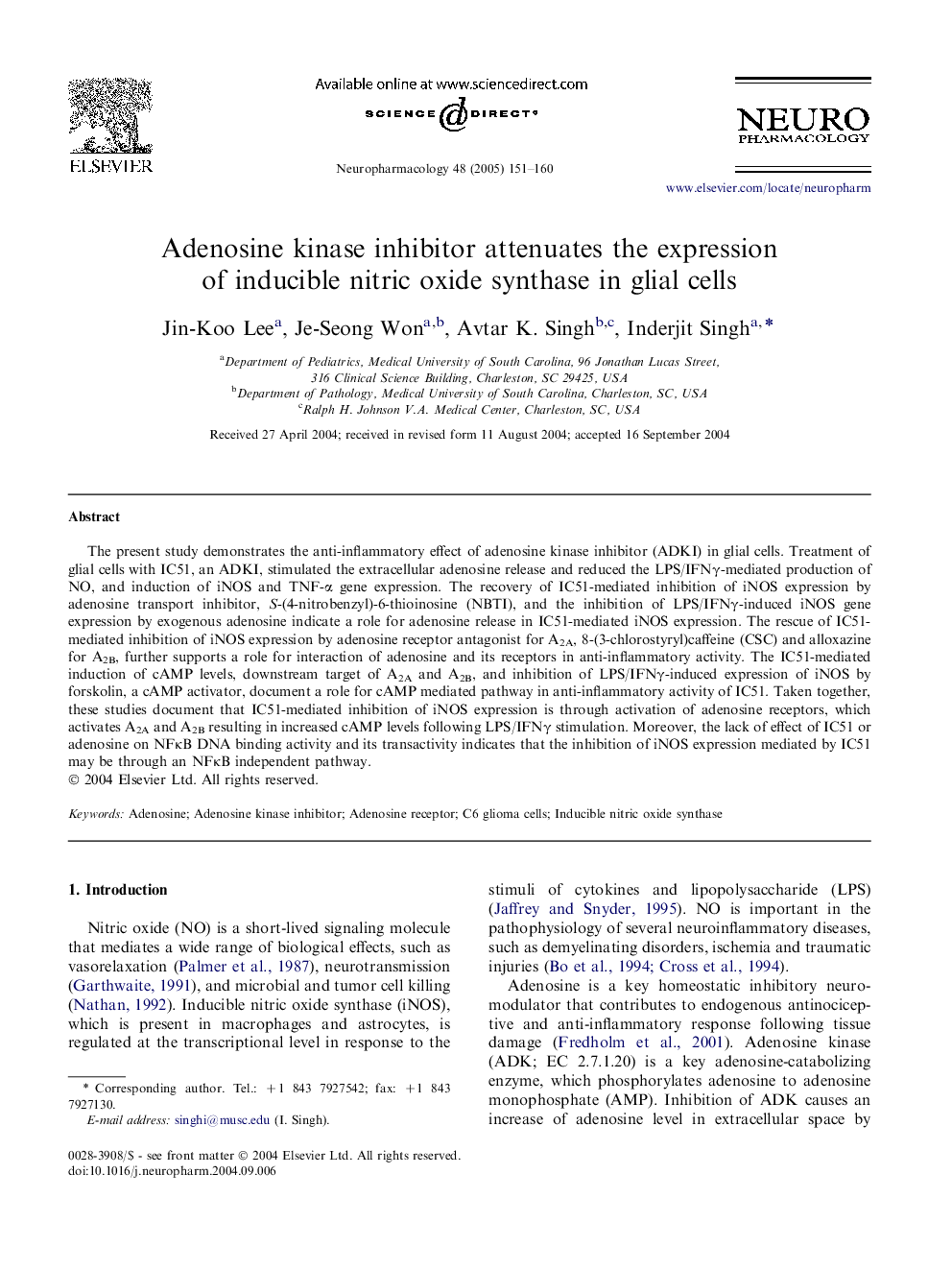| Article ID | Journal | Published Year | Pages | File Type |
|---|---|---|---|---|
| 8998407 | Neuropharmacology | 2005 | 10 Pages |
Abstract
The present study demonstrates the anti-inflammatory effect of adenosine kinase inhibitor (ADKI) in glial cells. Treatment of glial cells with IC51, an ADKI, stimulated the extracellular adenosine release and reduced the LPS/IFNγ-mediated production of NO, and induction of iNOS and TNF-α gene expression. The recovery of IC51-mediated inhibition of iNOS expression by adenosine transport inhibitor, S-(4-nitrobenzyl)-6-thioinosine (NBTI), and the inhibition of LPS/IFNγ-induced iNOS gene expression by exogenous adenosine indicate a role for adenosine release in IC51-mediated iNOS expression. The rescue of IC51-mediated inhibition of iNOS expression by adenosine receptor antagonist for A2A, 8-(3-chlorostyryl)caffeine (CSC) and alloxazine for A2B, further supports a role for interaction of adenosine and its receptors in anti-inflammatory activity. The IC51-mediated induction of cAMP levels, downstream target of A2A and A2B, and inhibition of LPS/IFNγ-induced expression of iNOS by forskolin, a cAMP activator, document a role for cAMP mediated pathway in anti-inflammatory activity of IC51. Taken together, these studies document that IC51-mediated inhibition of iNOS expression is through activation of adenosine receptors, which activates A2A and A2B resulting in increased cAMP levels following LPS/IFNγ stimulation. Moreover, the lack of effect of IC51 or adenosine on NFκB DNA binding activity and its transactivity indicates that the inhibition of iNOS expression mediated by IC51 may be through an NFκB independent pathway.
Keywords
Related Topics
Life Sciences
Neuroscience
Behavioral Neuroscience
Authors
Jin-Koo Lee, Je-Seong Won, Avtar K. Singh, Inderjit Singh,
